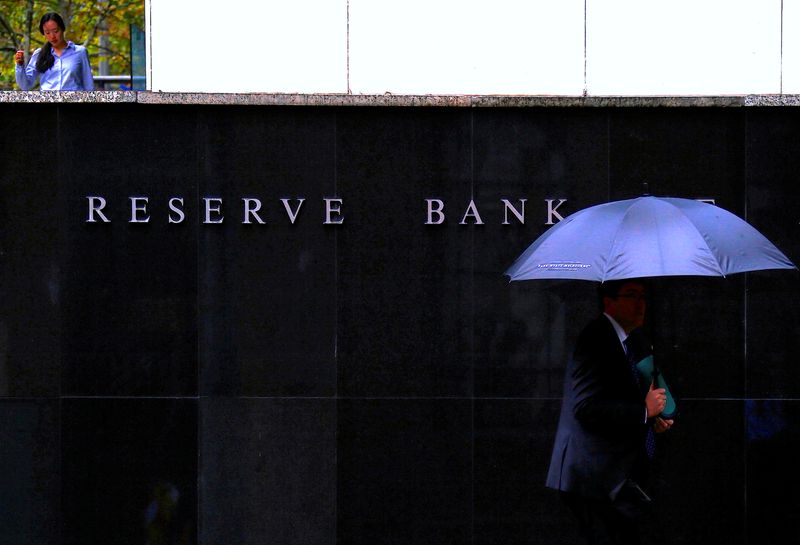Investing.com’s stocks of the week
By Stella Qiu and Wayne Cole
SYDNEY (Reuters) -Australia's central bank held interest rates steady on Tuesday, as expected, and cautioned policy would need to stay restrictive for some time yet, strongly suggesting borrowers could expect no Christmas cheer this year.
There was subdued market reaction, with the Australian dollar hovering at $0.6595. Rate swaps point to a scant chance of a rate cut this year, with a first easing not fully priced in until May next year.
Wrapping up its November policy meeting, the Reserve Bank of Australia (RBA) kept rates at a 12-year high of 4.35%. It again repeated that it was not ruling anything in or out on policy, in a crucial paragraph that is largely similar to the one in September.
Once again, the central bank did not explicitly consider either a hike or cut in rates this time.
Markets have heavily wagered on a steady outcome as the labour market stayed surprisingly strong and third quarter core inflation was still a little sticky.
"While headline inflation has declined substantially and will remain lower for a time, underlying inflation is more indicative of inflation momentum, and it remains too high," said the board in a statement.
"This reinforces the need to remain vigilant to upside risks to inflation and the Board is not ruling anything in or out."
The RBA has held its policy steady for a year, judging the current cash rate of 4.35% - up from 0.1% during the pandemic - is restrictive enough to bring inflation to its target band of 2-3% while preserving employment gains.
Its hawkish stance is in contrast to central banks in the U.S., euro zone, Britain, Canada and New Zealand who have cut rates as price pressures ease.
Australia's headline inflation slowed to 2.8% in the third quarter, back in the target band for the first time since 2021, but that was mostly due to government rebates on electricity bills. Underlying inflation came in at 3.5%, still some distance above the mid-point of the target.
The central bank's latest forecasts showed underlying inflation - a trimmed mean measure closely watched by the RBA - is expected to slow just a touch to 3.4% by year-end from 3.5% in the third quarter. It won't return to target until 2026.
The RBA lowered its GDP forecast to 1.5% by the year-end, from 1.7%, in part reflecting soft household consumption. It also trimmed its estimate for next year to 2.3%, from 2.5%.
When asked about the prospects of near-term rate cuts at a post-meeting press conference, Governor Michele Bullock said she wanted to steer clear of that.
"What I would say is that I think at the moment we have got the right settings ... We will try to make sure that we're tuned in enough that if things start to turn down more than expected, we're ready to act. But we don't know."
The economy barely grew in the last few quarters but the labour market somehow has stayed surprisingly strong with employment gains averaging 3.1% over the past year, twice the U.S. rate. The jobless rate stayed low at 4.1%.
All that means is that a rate cut this year is looking unlikely, making the RBA one of the last few central banks to ease policy.
In a separate statement on monetary policy, the RBA made a point of saying that financial conditions in Australia were still not as tight as in most other developed countries even after recent rate cuts there.
Shane Oliver, chief economist at AMP (OTC:AMLTF), said the RBA's rates guidance is now neutral, adding that comments from Bullock were less hawkish. Notably, Bullock declined to reiterate that cuts were unlikely in the near term.
"RBA would still probably prefer to wait for confirmation of the downtrend in underlying inflation in December quarter inflation data due at the end of January," said Oliver, who tipped for a rate cut in February.
"We doubt that the RBA will have to wait all the way out to May to be confident enough on inflation to start cutting."
